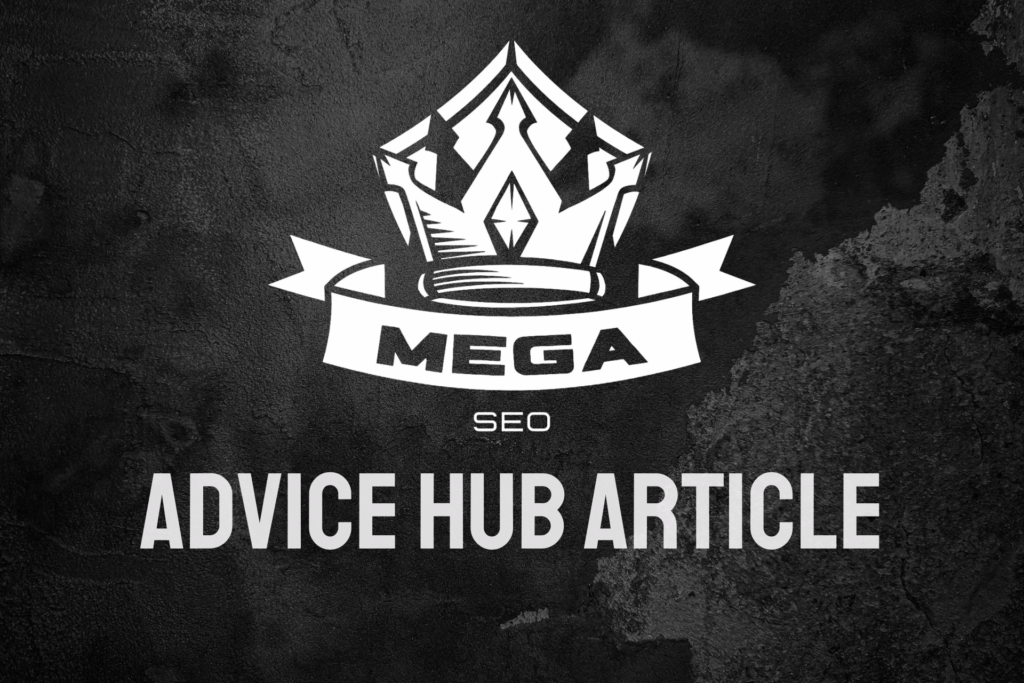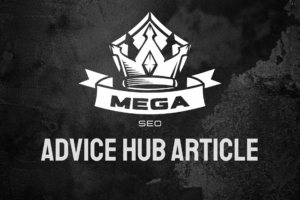The world of SEO is filled with misconceptions, half-truths, and practices of questionable integrity. As an experienced SEO provider catering to businesses across the UK, we at Mega SEO believe in an ethical, results-driven approach focused on generating real value for our clients.
However, we also understand the intense competition brands face in striving for online visibility. With so much advice out there on how to “hack” your way to the top, it can be tempting to cut corners.
But questionable tactics often fail to provide lasting success. In our over 15 years in this industry, we have learned what truly works when it comes to sustainable SEO and organic growth. We want to have an honest discussion on some harsh realities every business and SEO professional needs to know.
In this no-holds-barred blog post, we break down 20+ hard truths about SEO in 2024 that many don’t want to admit. We’ll be tackling factors both within and outside of your control when determining search visibility. By better understanding the modern search landscape, you can craft an ethical and effective approach to long-term SEO success.
Big Sites With Poor Content Will Outrank You
As frustrating as it sounds, large established websites with expansive networks of backlinks and authority tend to outperform smaller sites with much better content. While quality content focused on addressing user intent plays a crucial role in rankings, other factors like domain authority and trust carry enormous weight as well according to our analysis.
Over the years, we’ve seen many examples of prominent news publications, review sites, and informational portals ranking highly in search results despite thin, low-value content. These sites have invested substantially in link building over many years to develop powerful backlink profiles. Coupled with strong brand recognition in their space, they maintain high visibility despite lean content.
So if you are a relatively young website trying to compete on informational search queries, it can prove exceedingly difficult to outrank entrenched incumbents in the short-term regardless of your content quality. The reality is you need a combination of excellence across technical SEO, user experience, branding, backlinks, and authority to overcome their advantage. But for most sites, that takes serious time and investment to achieve.
Many Lucrative Niches Are Now Saturated
It’s no secret that popular niches like health, finance, and travel attract enormous search volume and customer interest. But attempting to penetrate these spaces as a new site now faces almost insurmountable difficulties. The reality is that the window to gain first-mover advantage in these areas has likely passed. Established sites continue building their content catalogues, backlink profiles, and authority over the years. With so much sophistication and history behind the top players, rising above the noise as a newcomer in 2024 requires tremendous resources.
We generally advise clients to avoid directly competing in extremely saturated niches as an unknown site without a unique angle. Instead, you may find greater success targeting less competitive long-tail keywords in broader niches. Or consider building authority in a very specific, underserved sub-niche before expanding from there. The potential traffic in popular categories shouldn’t be ignored. But gaining real visibility now against dominant sites will require strategic patience and budget.
Quality Backlinks Aren’t Free
Backlinks remain enormously influential for SEO despite Google updates. But the days of easily acquiring editorially given links from prominent websites are largely gone. The reality now is that gaining quality backlinks requires tremendous manual outreach effort, very creative link bait assets, or financial investment. Landing impactful links is a process of building relationships with site owners in your space, persuasively pitching the value of your content, and convincing them to feature you.
While tactics like broken link building, resource page development, and guest posting can facilitate the process, they demand significant time invested. And even then, you realistically need a budget to amplify your reach. Prominent sites receive endless streams of link requests daily. Rising above that noise usually entails paid promotions to incentivize publishers, whether directly or through advertising. Quality backlinks can pay dividends for your organic growth. But easy, free access to them is very rare despite what some may claim.
Algorithm Updates Can Devastate Rankings
Google’s core algorithms determine your site’s visibility in SERPs. And when the company rolls out major updates focused on assessing content quality and authority, the results can be utterly devastating even if you’ve invested heavily into SEO. We’ve seen well-established sites lose 70%+ of their organic traffic overnight due to an update penalising sites with poor E-A-T (Expertise, Authoritativeness, Trustworthiness) or user experience.
Years of effort building content silos, backlink profiles, and technical infrastructure can be rapidly undone if you fail to meet Google’s evolving standards. So while foundational SEO remains crucial, you should also deeply understand how algorithms judge quality to future-proof your approach. Expertise in areas like topic relevance, citation sourcing, site speed, engagement metrics, and more can help safeguard your rankings regardless of updates. But for sites neglecting the fundamentals, algorithm shifts can sink their visibility indefinitely.
Branding Drives More Organic Traffic Than SEO
Strong branding is perhaps the most overlooked yet powerful element for long-term organic growth. While technical SEO builds the foundation and content fuels visibility, branding makes your site naturally more link-worthy, shareable and memorable in the minds of users. Visitors are much more likely to mention your site online and link to your content if you are a recognized industry authority. And prominent links and references then amplify your rankings further.
Additionally, people turn to authoritative brands directly for information without needing to search at all. Developing strong branding through PR, partnerships, quality content and community building pays compounding dividends. So while early-stage sites should certainly not neglect technical SEO, long-term organic growth at scale depends enormously on branding. An authoritative brand with mediocre SEO will outperform a site with excellent SEO but no brand recognition rather quickly. Prioritising branding from the start can help sites gain far more leverage from their SEO efforts down the road.
Organic Traffic Takes Time to Build
Achieving meaningful levels of organic search traffic rarely occurs quickly despite the claims of so many. In reality, even sites that eventually attract millions of visitors per month often needed years of concerted effort to reach that scale. Building a powerful backlink profile, content catalogue, authority and awareness in your space demands tremendous persistence. Excellent content alone fails to provide quick wins – discovery and trust must be earned over time.
Beware of any SEO promises of rapid traffic growth without long-term brand building. Sustainable rankings depend enormously on authority signals that accumulate slowly. So while sites might achieve temporary visibility through gimmicks, keeping that visibility requires a strategic, patient approach. Organic search favours brands that consistently prove their worth to users and Google over many months and years. Prioritise building an authoritative asset first rather than seeking quick wins – the delayed payoff will justify the effort.
Google Favours Its Own Properties
As Google continues expanding its collection of vertical properties like Maps, Shopping, Flights, Jobs and more, its clear preference toward highlighting its own sites threatens organic visibility for publishers. In many search results, Google inserts multiple featured snippets, knowledge panels and vertical carousels above standard organic listings. This pushes organic results further down page, requiring more scrolling to access them.
The reality is that Google has a strong incentive to keep users directly engaged with its properties rather than quickly linking out to other sites. So while SEO remains crucial for visibility, actually appearing prominently in results is becoming harder with more on-page real estate occupied by Google’s native formats. For publishers, this makes excelling in featured snippets via schema markup absolutely necessary to gain above-the-fold visibility that catches user attention. But for most sites, Google intruding further into search results presents a troubling trend that dilutes organic visibility.
Quality Content Doesn’t Guarantee High Rankings
In an ideal world, websites would purely be ranked by the quality, depth and usefulness of their content for searchers. But in reality, excellence in on-page SEO and topic relevance does not always correlate with top rankings in competitive spaces. As covered earlier, factors like domain authority, trust, branding, backlink networks and more weigh enormously in determining visibility.
We have seen countless examples of sites producing outstanding, meticulously researched content far outperforming competitors in quality, only to be outranked by established domains with shallower content but more authority signals. This unfortunate reality should not deter you from striving for excellence with your content. But it is important to set proper expectations – writing amazing content alone does not guarantee search visibility, particularly for young sites lacking authority. It must be amplified through other efforts to ultimately ascend rankings.
SEO Success Requires a Serious Budget
Contrary to some perceptions, achieving high search visibility and revenue through SEO rarely stems from a single smart hack or tactic. Lasting success in competitive spaces usually requires extensive investment in content production, technical optimisation, creative link building, community engagement, brand building and more over many years. Skilled human effort demands financial resources.
Beware SEO promises of ranking #1 for valuable keywords on a shoestring budget. While examples exist of essentially bootstrapping sites to profitability leveraging SEO, scaling that profit through growth depends heavily on budget. If you are an early-stage site aiming to rapidly expand, securing financing should be prioritised to amplify content production, outreach capabilities and authority-building efforts. Sensible SEO success requires spending serious money, whether through equity or revenue.
Click-Through-Rate Manipulation Is On the Rise
Click-through-rate (CTR) from search results to your site is a signal Google uses to determine relevance and user experience. High CTR suggests you satisfy searcher intent better than competitors. Unfortunately, unethically inflating CTR through means like aggressive ads or manipulative page elements is rampant today. Tactics like fake site previews, shocking claims and popup CTAs aim to bait people into clicking without offering any real value.
By making changes essentially to “trick” searchers into clicking rather than earning those clicks honestly through quality content and UX, sites manipulate their CTR upward. This then convinces Google’s algorithm they provide greater relevance than reality. While Google tries to crack down, sites constantly find creative new ways to inflate their CTR through deception. For brands focused on an ethical, sustainable approach, competing with sites aggressively inflating CTR poses a major challenge.
Bad UX Overrides Good Content
User experience encompasses everything from site speed to navigation, readability, mobile-friendliness and more. And despite creating high quality content, failing to optimise UX can nullify any potential rankings boost. After all, if your site frustrates visitors and makes consuming your content difficult, search engines assume relevancy must be poor regardless of accuracy.
Technical deficiencies like a slow site speed, annoying popups, tiny text, intrusive ads and more detract enormously from user experience. And with Google’s algorithms heavily prioritising UX signals, sites with subpar technical optimisation will suffer over time regardless of their content quality. So before trying to rank well through content alone, ensure your site speed, navigation and consumption experience are truly excellent. Otherwise, the value of that content will effectively be invisible to search engines.
Schema Markup Should Not Be Overlooked
Schema markup enables search engines to extract specific data from page content through structured data rather than natural language processing. Implementing proper schema guidelines for aspects like reviews, FAQs, events, products and more then allows that data to be displayed in rich results. This enhances click-through rates and visibility.
Unfortunately, a lot of sites still overlook the importance of schema and how it can increase impressions and traffic. By adding markup, you explicitly tell Google what your content means, raising discoverability. And the rich result displayed schema enables it to catch more user attention, boosting CTR. Structured data should be part of any modern SEO strategy. Review competitors using Google’s Structured Data Testing Tool and identify where schema can spotlight your content uniqueness at a glance. The ROI potential is enormous.
Over-Reliance on Plugins Can Slow Sites
WordPress powers over 40% of all websites due to being user-friendly and customizable. But with that flexibility comes risk of plugins degrading performance. Too many unnecessary plugins results in bloated code, extra HTTP requests, conflicts and duplicated functionality. Even well-coded plugins from reputable developers contribute overhead, slowing your site.
Plugin bloat presents a common issue we encounter auditing site speed. Every plugin enabled can add a dozen or more files, executing code on every page load. Excess plugins also increase security risks and the burden of keeping them updated. So while plugins provide helpful functions, thoughtfully curate only what is absolutely necessary, and thoroughly test how each impacts performance. Disable unused plugins. Audit with web.dev and Lighthouse. And consider lightweight alternatives to popular plugins that drag down speed.
Uncertainty Surrounds E-A-T
Google references its E-A-T guidelines regularly as crucial for informational sites to rank well. But specifics on how E-A-T (Expertise, Authoritativeness, Trustworthiness) is calculated algorithmically remain very unclear. Best practices for improving E-A-T signals seem limited to areas like citation quality, site security and reputation management. The direct ranking influence of specific E-A-T elements is still largely unknown.
As SEO consultants, we invest heavily in building expertise, trustworthiness and authority both on-site and off-site through content, community engagement, PR and more. But we cannot definitively claim particular E-A-T optimisations directly lead to specific ranking gains or losses. Google likely judges E-A-T holistically across many signals. So while E-A-T should be priorities, managing client expectations on its ROI is important when its algorithmic impact is opaque.
Long-Form Content Length Isn’t a Ranking Factor
Conventional SEO wisdom states that long-form, pillar content over 3,000+ words will outperform shorter articles. But our in-depth analysis reveals weak correlation between word count alone and rankings. Creating expansive content is certainly valuable when the subject warrants deep coverage. However, prioritising long-form content for the sake of length rather than usefulness risks reducing quality.
We have seen many examples of sites ranking highly for competitive terms with content under 1,500 words by delivering concise, expert coverage actually preferred by searchers. At the same time, we see bloated articles with 5,000+ words beaten out by shorter pieces. So rather than imposing arbitrary length goals, focus on providing the depth readers need with no fluff. Streamlined, scannable and actionable content beats bloated content. If the subject requires long-form treatment, by all means go very deep. But length for the sake of length can actually backfire.
Image Optimisation Is Necessary But Tedious
Visually compelling images do wonders for engaging visitors and amplifying content value. But optimising images for SEO remains a tedious manual process. Merely uploading images without optimisation signals valueless to Google. Best practices require detailed optimisation including descriptive file names, alt text, title text, captions, original creation at proper resolutions and more.
Ensuring every image relates clearly to your content’s topic requires human effort. Automation can help, but risks keyword stuffing penalties if overdone. Support content with images while also optimising every visual asset for maximum discoverability. Images influence click-through rates enormously. So while the effort of manual optimisation is tedious, well-optimised images compound the impact of your content over time by boosting engagement.
Mega SEO: At The Heart of Transparent SEO Services
We hope this glimpse into the harsher realities of SEO proves useful for both businesses and agencies in setting proper expectations.
The world of search engine optimisation still contains many half-truths and myths leading brands astray. But through an ethical, value-focused approach, sustainable SEO success remains achievable.
If you are seeking expert SEO guidance tailored to your brand’s needs, contact us for a consultation today.
With over 15 years of experience helping UK businesses improve their organic growth, Mega SEO develops fully customised SEO and content strategies to support your long-term goals.
See how our passion for search, technical expertise and creative problem solving can take your online visibility to new heights.
Reach out now to learn more about partnering with Mega SEO for sustainable search success. The future rewards those who build for it today.



